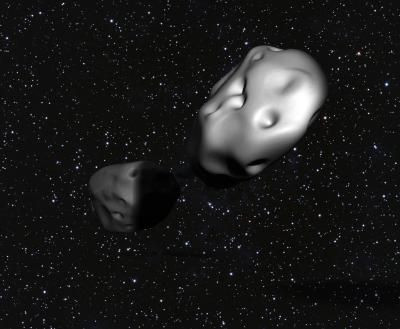Rare Eclipsing Double Asteroid Found By College Students, 3905 Doppler Is ‘A Fantastic Discovery’ [PHOTO]

A group of college students got more than they bargained for when they signed up for an astronomy class.
The non-astronomy majors at the University of Maryland discovered a rare eclipsing double asteroid that had yet to be studied. Dubbed 3905 Doppler, the binary asteroid had originally been spotted in 1984 but it was only last September when the students took a closer look that they made the surprising discovery.
"This is a fantastic discovery," University of Maryland Astronomy Prof. Drake Deming, who was not involved with the class, said in a statement. "A binary asteroid with such an unusual lightcurve is pretty rare. It provides an unprecedented opportunity to learn about the physical properties and orbital evolution of these objects.”
Less than 100 asteroids of this type have been found along the asteroid belt between Mars and Jupiter. In September, the students picked the asteroid to study over a period four nights in October 2013, photographing the changes of intensity in the asteroid’s reflected light. The images, which came from a privately owned telescope in Spain, were then turned into a lightcurve – a graph of space objects’ brightness over time.
"When we looked at the images we didn't realize we had anything special, because the brightness difference is not something you can see with your eyes," Hayes-Gehrke said.
But once the images were converted to a lightcurve graph, the students found the asteroid’s light occasionally practically disappeared.
"It was incredibly frustrating,” Alec Bartek, a senior physics major said. "For some reason our light curve didn't look right."
The students’ professor, Melissa Hayes-Gehrke, suspected the asteroid was actually two space rocks that were orbiting each other. When one of the two blocked the other from view it formed an asteroid eclipse.
It took approximately 51 hours for the asteroids to orbit each other – which is quite long and has yet to be explained.
"Even then I was not fully aware of how special the discovery was," sophomore economics major Brady Bent said. "I thought it just meant we would have to do more work. As we continued to analyze our data, other professors in the Astronomy Department came over to view our work. At this point I understood just how rare our find was."
This isn’t the first space discovery credited to the University of Maryland. In 2009, university astronomers found that water existed on the moon. The discovery came unexpectedly when researchers sent a spacecraft to study comet, but made the surprising discovered the beginning of the light spectrum for water on the moon’s surface.
"I was somewhat flabbergasted," team member Tony Farnham told The Diamondback. "It was kind of an amazing thing because we had always assumed that the moon was pretty much completely dry.”
© Copyright IBTimes 2025. All rights reserved.





















